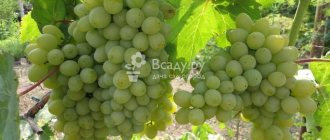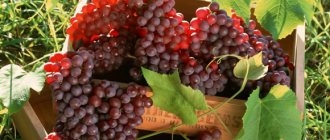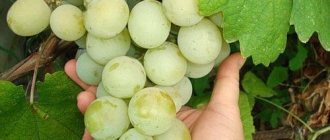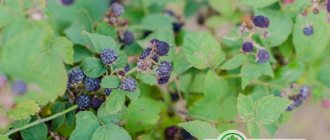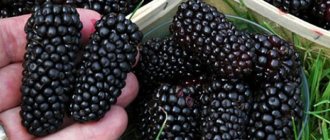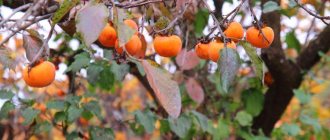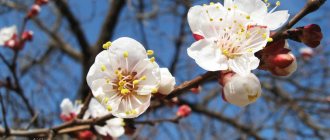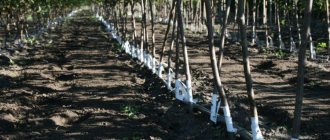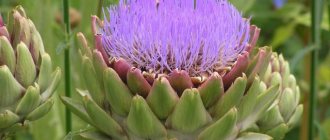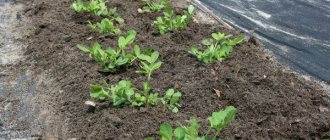Table grapes “Moldova” have been tested in practice by many amateur gardeners and farmers in the post-Soviet space. The variety has proven itself to be unpretentious, productive and resistant to common diseases and pests.
The grape variety “Moldova” (pictured) is distinguished by beautiful clusters and a pleasant taste of “blue” berries
Due to its advantages, this variety is interesting for industrial and personal gardening. According to reviews from summer residents, the “Moldova” bush can be an excellent “tasty” decoration for any fences, gazebos and walls. Let's start with the main varietal characteristics summarized in the table:
| Parameter | Characteristic |
| Culture | Grapes (Vitis Vinifera L.) |
| Variety | "Moldova" |
| Growing conditions | Gardening |
| Direction of use | Dining room |
| Flower type | Bisexual |
| Bush growth vigor | Big |
| Ripening time | Late: third ten days of September – first ten days of October (145-160 days from the beginning of the growing season) |
| Consumption period (fruit shelf life) | Autumn (autumn-winter); in the refrigerator for about 6 months |
| Precociousness | For the 4th year |
| Productivity of one bush per season | High: about 25 kg (maximum – 28-30 kg); in industrial plantings – 13-16 t/ha |
| Bunch shape and weight | Medium, conical, medium-dense; weighing 300-400 g |
| Fruit shape and color | Large (2.5 x 1.9 cm), oval, dark purple; firmly attached to the stalk. The skin is thick, dense, durable, with a thick waxy coating, you can feel it when eating |
| Fruit weight | 5-6 g |
| Pulp | Meaty, juicy, dense, crispy |
| Tasting assessment (taste qualities) | 9.1-9.5 points (out of 10) – taste is sweet, simple, pleasant |
| Purpose of fruits | Dessert type |
| Disease resistance | Highly resistant to gray rot and phylloxera; slightly affected by mildew, oidium – 2 points (out of 5); susceptible to black spot (Phomopsis) |
| Winter hardiness | Withstands frosts down to −22 ℃ (in most regions requires shelter for the winter) |
| Year of registration in the State Register of the Russian Federation | 1986 |
| Recommended growing regions | North Caucasian (6), Nizhnevolzhsky (8) |
| Originator | Federal State Budgetary Institution "Federal Rostov Agrarian Research Center" (Rostov region) |
| Year of registration in the register of plant varieties of Ukraine | 1987 |
| Recommended growing regions | Southern regions of Ukraine (except for the Azov steppes) |
| Applicant/owner | Research Institute of Viticulture and Winemaking of Moldova |
Advantages and disadvantages
Pros:
- Easy to maintain and undemanding to the type of soil.
- Abundant and regular fruiting.
- The ability to maintain presentation and excellent taste during long-term transportation and storage for several months.
- Self-pollinating flowers.
- Resistance to some diseases.
- Frost resistance (up to -26ºС).
- Quick recovery after pruning and natural damage.
- Resistance to wasp damage.
- Commercial attractiveness of growing and selling fruits.
Minuses:
- The need for mandatory rationing of the load on the bush.
- Vulnerability to oidium.
- The need to harvest immediately after ripening: delay is fraught with deterioration in the presentation of the fruit and a decrease in storage duration.
Origin
In 1974, in the Moldavian SSR, 2 parent vines were crossed - “Guzal Cara” and “Save Villar 12-375”. This is how the grapes were born, named after the place of their birth - “Moldova”. It took the next 12 years for the new variety to pass all the necessary tests, and in 1986 it was entered into the State Register and brought to the territory of the modern CIS. This is how the history of cultivating “Moldova” grapes began in the southern regions of Russia and Ukraine, and subsequently in the central latitudes of the vast country.
The parents of “Moldova” are “Guzal Cara” and “Save Villar 12–375”
Main characteristics
“Moldova” is a table grape that is intended primarily for fresh eating. Over the several decades of its existence, people have adapted to making preserves, jams, drinks, juice, and wine from the variety. The variety is also good frozen. Private entrepreneurs receive a good profit from the sale of grapes after several months of storage - for the New Year and Christmas. It is also worth noting a few more “profitable” varieties: “Arcadia”, “Kishmish 432” and “Delight”.
Ripening time
“Moldova” is a late-ripening variety. This means that from the moment the plant awakens after winter until the berries fully ripen, 150–160 days usually pass. As a rule, harvesting in Moldova begins in early to mid-September.
Bush
The “Moldova” variety has a powerful, strong, fast-growing bush. It gives a bountiful harvest when grown horizontally. If the plant is not thinned out, then over time the density of the cluster decreases, and the berries begin to become smaller. The vines are light brown in color. The leaves are round, large, green, five-lobed and slightly drooping on the underside.
The flowers are bisexual, so the plant does not create problems with the need for pollination from the outside.
“Moldova” feels great on the arch
Bunches and berries
The average weight of the clusters is 300–600 g, however, when thinning clusters on mature vines, their weight can reach 1 kg. The shape of the clusters is conical, sometimes with wings. The brush density is high.
The oval berries of the variety are medium in size (19 by 25 mm) and weighing up to 6 g. They are painted in a dark blue color with a purple tint, the surface is “fluffed” with pruin - a natural, easily erasable coating. The pulp is dense, juicy; The skin is not tough and easy to chew. Each grape contains 2–3 seeds, but they do not spoil the taste characteristics.
The berries are moderately sweet: the sugar content is 16–19%, but during storage it may increase; acidity level – 8 – 10 g/l.
Taste and yield
With proper and systematic care, one bush of “Moldova” grapes in southern latitudes can produce up to 150 kg of juicy fruit.
“Moldova” fruits have a rather interesting taste with light plum notes.
Rules of use
The prepared wine can be tasted after a month or two. The taste will be more intense if you wait another 30 days - for wine made from Moldova grapes, this is quite enough for ripening. But wine experts say that the aroma will become even more intense if you leave the bottles of the drink in a horizontal position for some time.
Home-made cheeses, including Moldavian feta cheese, and juicy meat go well with homemade grape wine.
Features of cultivation
Landing
The “Moldova” variety can be planted in both autumn and spring. Autumn planting is good because the winegrower does not need to worry about constantly watering the young plant - there is already enough humidity. But planting should be done a month to a month and a half before frost, because the grapes still have time to acclimatize and grow. You will also have to take care of reliable shelter for the bush for the winter, otherwise it will simply die during severe frosts and bad weather.
Most gardeners prefer to plant grapes in the ground in the spring: there is enough time for the seedlings to adapt and gain strength. True, providing systematic watering to the plant is the wine grower’s primary task, otherwise, under the rays of the hot summer sun, the plant will die without moisture.
Important! Planting grape seedlings must be done at an air temperature of not lower than +15ºС, soil temperature – not lower than +10ºС.
Place and soil
To ensure the successful development of the “Moldova” grape, its systematic and abundant fruiting, several “preferences” of the variety should be taken into account when planting:
- The soil should be light and fertile, it should not interfere with the circulation of moisture and air around the roots.
- Groundwater should not lie close to the surface: excess moisture will cause rotting of the root system of the grapes and damage them with fungal infections. For the same reason, the plant should not be planted in lowlands where moisture from the surrounding hills flows and stagnates.
- This variety loves freedom and space, due to the growing power of the vine. Each “Moldova” bush should be planted 3–4 meters from any other plant or nearby structure. A shorter interval will negatively affect the quality and quantity of fruits.
- The planting area should be sunny, preferably on the south side of the garden or vineyard. Also, the place should be protected from drafts and cold winds. In this regard, “Moldova” is a “sissy”.
The landing algorithm is standard. 2 weeks before the autumn planting or from autumn to winter for spring planting, a hole is dug 90 cm deep and 1 m in diameter. At the bottom there is drainage, then compost mixed with soil and humus. The next layer is fertile soil. The seedling is placed on it, carefully spreading all its roots over the surface of the soil. The grapes are sprinkled with earth, lightly compacting it. The plant needs to be watered abundantly (10 - 15 l) and covered with mulch (sawdust, peat, humus).
Watering and fertilizing
The variety must be watered a week before flowering and immediately after setting the berries. In a dry spring, the bushes also need to be watered after the leaves bloom, and in the fall - after harvesting. The rest of the time, the watering scheme is standard - 2 times a month, provided there is no or little natural precipitation. If the summer, on the contrary, is rainy, then there is no need to rush with watering, but you definitely need to take care of drainage.
Attention! “Moldova” accepts any method of irrigation: drip, through canals and directly under the bush.
Mulch will help retain moisture, covering the root zone of the plant with a radius of 50 cm. The thickness of the mulch layer is 5 cm.
Fertilizers for the “Moldova” bush should be applied 3–4 times per season.
In spring, fertilizers should be rich in nitrogen - a stimulant for the growth and development of green mass of the plant. In summer and autumn - phosphorus and potassium, they are needed for a full harvest, since they are “responsible” for the quantity and quality of fruiting. Once every 2 years in the fall you can apply organic fertilizing; more often it is not necessary: organic matter can cause grapes to become bitter. As a rule, the application of mineral fertilizers is combined with watering. More details about the fertilizer application scheme are described in a separate article.
Trimming
The total load on the bush should not exceed 70 buds. When pruning, 4–7 fruit buds should be left on each shoot. In the spring, when the clusters are formed, it is necessary to normalize them: no more than two clusters should remain on each shoot. Also, after winter, one should not forget about removing dry, diseased branches.
You should not spare grape branches: the variety is prone to rapid recovery, and it will respond to the removal of excess shoots and bones with large and sweet fruits.
Reference ! Pruning should be done before the sap begins to flow in the vines. The best option is early spring or late autumn. Moldova prefers the long-sleeve method when pruning; there should be 4 of them left on each bush after the procedure.
Diseases and pests
The “Moldova” variety is resistant to mildew, gray rot and phylloxera, but the winegrower will have to fight with chlorosis and oidium.
An effective measure against oidium will be to sprinkle grape leaves with sulfur powder at an air temperature of at least +18ºС. Irrigation with a sulfur-containing solution or fungicides Rubigan, Karatan, Bayleton will also help. Iron sulfate or the drugs Fetrilon and Iron Chelate will help cope with chlorosis.
“Moldova” is practically not besieged by wasps : the dense peel perfectly protects the sweet and juicy pulp. But birds love to eat berries. It will cost the winegrower a lot of effort to preserve the harvest from birds. Usually, between the bushes and along the trellises, it is customary to hang shiny ribbons, rattles, bells - everything that makes noise, knocks, shines, thereby scaring away birds. As a last resort, if all the measures taken turned out to be useless, the grape bushes must be covered with a net with small cells.
“Moldova” is also affected by the leaf roller. The best measure is to prevent its occurrence. In the fall, it is imperative to collect fallen leaves under the bushes and burn them, and also inspect the trunks for the presence of pest pupae. If any are found, they are subject to mandatory destruction.
Wintering
Frost resistance of grapes is average: the bushes can survive down to -23ºС, -26ºС, but only if they are reliably insulated for the winter.
Young plants can be protected using metal vertical arcs and film. The lashes of adult bushes are tied and pressed to the ground, after which they are covered with film, geotextiles, sprinkled with earth, or a shelter can be built from slate, boards, or spruce branches. The near-trunk trunk must be mulched with sawdust and peat, which must be removed with the onset of heat.
Harvest storage
Clusters of grapes can be stored for a long time. At a temperature of 0ºС - +3ºС and air humidity of 90%, they will safely retain all their external and taste characteristics for 3 months.
The variety is also good for transportation, but it is still better to transport brushes over long distances in an unripe state.
Regions
Initially, the variety was intended for cultivation in southern regions with a warm and mild climate. High yield indicators of “Moldova” were recorded, naturally, in Moldova, in the south of Ukraine, in Crimea, in the Krasnodar Territory and in the Rostov region.
Later, the variety began to be cultivated in the central regions of Russia, but it is not worth planting “Moldova” in northern latitudes: the risk that the berries simply do not have time to ripen in the short summer is too great.
Landing rules
Before planting, you should choose a good location. The site should be sunny, protected from the winds. The plant does not like drafts. This requires fertilized soil with a groundwater depth of at least 1.5 m from the surface. If necessary, mineral fertilizers are applied to the black soil.
The optimal planting time is spring. Over the summer, the seedling manages to take root and become resistant to winter cold. The air temperature should be set at +15 degrees. It should be taken into account that the bushes grow greatly. Stretching shoots are provided with free space, so the distance between bushes should be 4-5 m.
Comparison with analogues
“Moldova” is a black table variety. Black grape varieties include “bull’s eye,” another late-ripening variety. The bunches of this plant are the same in weight as those of “Moldova”, but the yield is rather low: only 15 - 20 kg compared to 150 kg. Both grapes are heat-loving plants; it is better to grow them in the southern regions, using shelter in case of frosty winters.
“Moldova” was used for crossing, as a result of which a new early-ripening grape variety, “Kuban,” appeared. The “Child” surpassed its parent in hand weight (up to 1.5 kg) and taste characteristics: notes of nutmeg are clearly felt in the taste. But in terms of resistance to frost and fungal diseases - no.
A comparison of “Moldova” in basic parameters with some late grape varieties can be seen in the table below.
| Sign | Variety | |||
| Moldova | Codrianca | Augustine | Original | |
| Ripening period | 150 – 160 days | 110 – 120 days | 115-125 days | 120-130 days |
| Frost resistance | up to -26C | up to -24C | up to -24 °C | Up to -24 °C |
| Yield per bush | up to 150 kg per bush | up to 50 kg | up to 60 kg | up to 100 kg |
| Bunches | 300 g – 1 kg | 400 g - 1.2 kg | 400-500 g | 500-800 g |
| Taste | Plum shade | Harmonious, moderately sweet | Muscat aroma | Harmonious |
| Color | Dark blue with purple tint | Dark purple | Green-yellow | Green-yellow |
| Disease resistance | Above average | Above average | Average | Average |
| Shelf life | From 3 months to six months | 1 month | 2-3 weeks on the bush | Few weeks |
| Sugar content | 16 – 19% | 18-19% | 17-19% | 15-21% |
| Acidity | 8-10 g/l | 6-7 g/l | 6-7 g/l | 6-8 g/l |
Is it possible to harm the body?
Due to its low calorie content, the Moldova grape variety can be recommended for use as part of weight loss diets. However, there are a number of conditional contraindications to eating grapes:
- diabetics;
- obese;
- with gastric and duodenal ulcers in the acute stage;
- with diarrhea.
With moderate consumption, the benefits of Moldova grapes for the body prevail over the harm.
Varieties of black grapes, their properties and composition of berries. The benefits of eating grapes for humans. Read about the benefits of these berries for the female body here.
Below, check out the photos and reviews about the “Moldova” variety.
Photo
Reviews
I have been growing 2 bushes of Moldova for about 20 years now. The harvest is decent, 30-40 kg per bush. So far I don’t have a better variety for long-term storage. Gregory, Poltava region.
The variety is very resistant to fungi, drought and frost, and ringing has accelerated its ripening by as much as a month. I'm delighted with this variety! Varvara, Moldova
Moldova is stored perfectly. Super taste - very sweet. Nadezhda, Krivoy Rog
Options for planting seedlings
Planting grapes at home is carried out with a stem, which is planted on the root system or grafted onto a finished plant.
If the seedling is buried directly in the soil, then it is first kept in water until white roots appear. After this, a hole is dug. Drainage in the form of gravel or broken brick is laid at the bottom. Then comes the seedling, which is covered with earth. Watering is done from above.
Before grafting, a wedge-shaped cut is formed at the bottom of the cutting. Then it is placed in water for a day, and then in a Humate solution for a few seconds. The main grape trunk is cleared of dirt, an incision is made on it, where the cutting is installed. Durable fabric is wrapped on top for quick healing. A support is installed next to the bush, after which the area is well watered.
